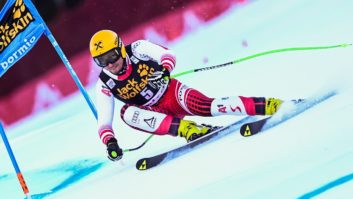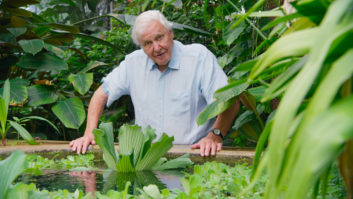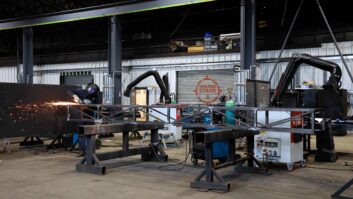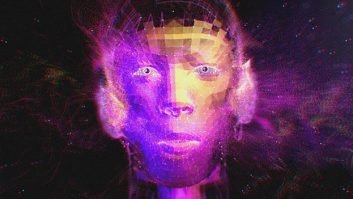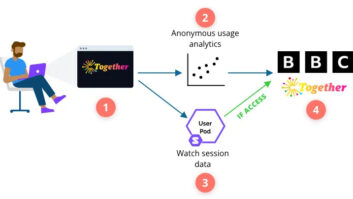BBC Resources is debuting the StroMotion motion analysis technology, developed by Swiss-headquarted Dartfish, for BBC2’s coverage of the XX Winter Olympics in Turin, writes Adrian Pennington.
The technology is a PC-based system that tracks the evolution of an athlete’s trajectory by compositing video frames side-by-side to create a mosaic of snapshots. A popular training tool, the device is a regular feature of ABC/ESPN’s broadcast of the Figure Skating World Championships. It was also deployed for NBC’s coverage of the Athens 2004 Olympics, but not previously by the BBC.
“StroMotion has been available only as part of the host broadcaster’s analysis feed,” said BBC lead editor Turin 2006 Charlie Cope. “This time we intend to use it for our studio analysis under our control and our output.” There are however limitations because the host broadcast operation, controlled for the IOC by International Sports Broadcasting, allows no unilateral feeds of the events. The BBC, explains Cope, will take “a dirty feed” from the host and mask caption and timing graphics.
Since the BBC production does not have camera control, it cannot take the application’s motion tracking telemetry (zoom, tilt, pans) directly from the tripod head. Instead “the software takes the tracking information from what it can see.”
The device, part of the Dartstudio suite, ingests a SD SDI 16×9 signal and recreates camera movement by tracking background data in the shot. At the same time it removes the moving object (a skater, ski jumper, bob) from the image. Once a number of frames of the moving object are dropped (the number can be specified) the two feeds are re-combined. An operator can either playback the original video footage or show a panoramic image, both options trailing clones of the athlete’s trajectory.
A second application, Simulcam, which interlaces the frames of two or more sequences to show superimposed movement of athletes, will also be used. Stromotion effects and Simulcam effects can be combined.
The software is robust, added Cope, but does suffer occasional glitches, particularly in close-ups where the white snow backdrop doesn’t provide enough information for camera tracking and object removal to take place.
